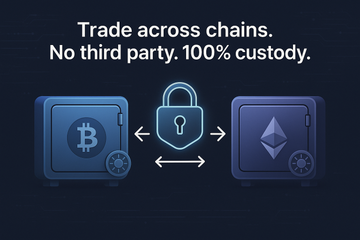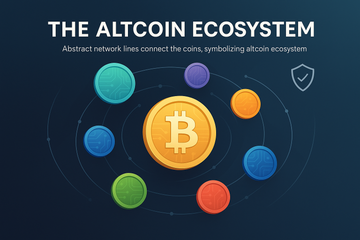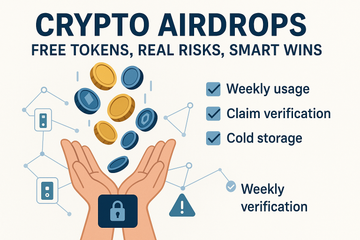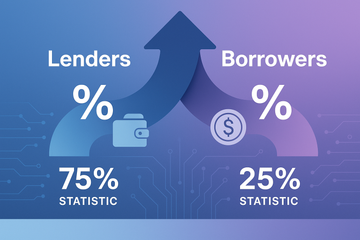If you have ever wished you could trade Bitcoin for Ether without sending funds to an exchange, you are not alone. Atomic swaps make that wish feel real. They let two people trade coins across different chains, peer to peer, with no custody risk from a third party. The trades are enforced by smart contracts, not promises. Sounds simple, right? It is simple for you as a user. Under the hood, it is careful, clever math.
Why Atomic Swaps Matter
Here is the thing. Many swaps still run through centralized venues. Those work, but they bring account friction, withdrawal holds, and counterparty risk. Atomic swaps cut that out. You keep your keys. You agree on terms with the other person. Then the contract either completes for both sides or refunds both sides. No half trades. No blind trust.
There is a second reason people care. Access. Maybe it is a weekend. Maybe a token is thinly traded. Maybe you want to stay private and avoid sharing your identity. With atomic swaps, you can trade straight from your wallet. No middleman. No waiting for support tickets.
Plain English First, Fancy Words Later
Let me explain with a locker story. Picture two lockers, one on the Bitcoin side and one on the Ethereum side. You put your BTC in your locker. The other trader puts ETH in theirs. Each locker has a special lock that opens with the same secret. Only you know that secret at first. When you unlock the ETH locker, you reveal the secret on-chain by using it. The other person sees that secret and uses it to open the BTC locker. If you never unlock your locker, both lockers time out and return the funds to their owners. That two-way safety is the key idea.
In crypto terms, those lockers are called HTLCs, short for Hashed Time Lock Contracts. The hash lock needs the secret to open. The time lock makes sure both of you can get a refund if things stall. Simple idea. Strong guarantees.
What Actually Happens On-Chain
Now the slightly more technical take. An atomic swap needs both chains to support a few features:
- Hash functions and preimages. You commit to a hash of a secret. Later, you reveal the secret to prove you have it.
- Time locks. Each contract can refund after a set window. One side uses a longer window so that refunds cannot clash.
- Script or smart contract support. Bitcoin uses scripts. Ethereum uses smart contracts. Many chains, like Litecoin or Dogecoin, support similar ideas.
A typical flow looks like this. You pick a random secret and share the hash with the other trader. You both create HTLCs that reference the same hash. The refund times are staggered, often by an hour or more. When you claim the other asset, your transaction exposes the secret. The other person uses that secret to claim your side. If the swap stalls, the time lock refunds you.
Where People Actually Use Atomic Swaps
You know what? The best part is how normal it feels once tools are set up. Projects like Komodo's AtomicDEX popularized cross‑chain swaps for BTC, LTC, and other UTXO coins. Liquality, a wallet that once focused on cross‑chain HTLC flows, showed how a browser wallet could guide users with a simple form. On Lightning, submarine swaps move funds between on-chain Bitcoin and Lightning channels with similar guarantees. Thorchain aims for the same goal of cross‑chain trades with its own design. It is not an HTLC, but it chases the same trust model, liquidity, and self-custody spirit.
Wallet support varies. Many desktop wallets can craft HTLCs for Bitcoin-like chains. Ethereum side contracts are a bit more involved, but they follow the same pattern. The user experience is getting better. It is still not click, click, done for every pair, but we are getting there.
Hardware Wallets, Please
If you care about self-custody, you probably care about security. Ledger and Trezor can sign the on-chain pieces of an atomic swap, which is exactly what you want. Transactions are real on-chain sends, so keep your keys offline. Ledger Live may not wrap the whole swap flow for every chain, but you can use a compatible app or wallet that supports PSBTs and contract calls, then sign with your device. Trezor Suite is similar. Confirm details, compare addresses, check fee settings, then approve the spend on the device. It feels slower, yes, but control beats speed when real funds are moving.
It Is Trustless, Not Magic
Let us be honest for a second. Atomic swaps remove the middleman. They do not remove network risk. If mempools clog or fees spike, your time windows might feel tight. If one chain is slow, you have to wait. Refunds work, but they are not instant. You need to watch the clock, keep your wallet open, and monitor confirmations. That is the trade. No middleman, more responsibility.
Common Gotchas
- Timeout tuning. The slower chain should get the longer refund window. Give yourself room for a few blocks of delay.
- Fee management. Use fees that match current load. A stuck claim near the deadline is a stress test nobody wants.
- Hash compatibility. Both sides must use the same hash function and encoding. Mismatches break swaps.
- Chain reorgs. Rare, but they happen. Wait for enough confirmations before moving to the next step.
I know, that list looks picky. The reality is kinder. Once you get the flow once or twice, it feels natural.
Speed, Cost, and The Patience Factor
Atomic swaps usually cost a bit more than a single send, because you have transactions on both networks. Each side sets up a contract. Then each side spends from it. That is at least two fees. If you use Ethereum or another busy chain, price swings in gas can surprise you.
Speed is fine when chains are quiet and block times are short. If one chain is sleepy or jammed, plan for a longer window. Lightning based swaps help with speed for BTC, but setting them up still takes a moment. This is why most people start small, learn the rhythm, then size up once they are comfortable.
Privacy Without Myths
Atomic swaps are often praised for privacy. That is partly true. No account. No KYC. No email address. Trades are between two wallets, end to end, and that feels right. Still, on-chain footprints are public. An HTLC is visible. A claim reveals a secret. Chain analysis tools can spot patterns. If you care about privacy, use coin control, avoid address reuse, and keep good wallet hygiene. It is not perfect privacy. It is honest privacy. There is a difference.
When Atomic Swaps Make Sense
Not every trade needs an atomic swap. If you want quick liquidity in a hurry, a centralized venue may be faster. If you move between tokens on the same chain, a normal DEX can be simpler. Atomic swaps shine when two chains are far apart, like BTC to LTC, or BTC to DOGE, and you want strong guarantees without giving up custody.
There is a seasonal angle too. During market runs, spreads widen and withdrawals slow down. Around the Bitcoin halving or during holiday weekends, people notice longer queues. A trustless swap from your wallet can be a calm path through the noise. You wait for your confirmations. You do not wait for an email.
A Practical Mini‑Guide
If you want to try a small swap, keep it simple. This is not investment advice, just a calm checklist you can tweak.
- Start tiny. Test with an amount you can forget about. Learn the flow without stress.
- Pick a tool. AtomicDEX or a wallet that supports HTLCs for your pair. Read a quick guide for your exact chains.
- Use a hardware wallet. Sign with Ledger or Trezor if possible. Check addresses and amounts on the device screen.
- Set timeouts wisely. Give the slower chain more time. Add a buffer beyond the usual confirmation count.
- Watch mempools. Check fees before you click. Aim for a fee that clears in a few blocks, not the bare minimum.
- Stay present. Do not start a swap and walk away. Keep your wallet online until both claims confirm.
The first time feels a bit slow. The second time feels normal. After that, it feels like a quiet superpower.
What About Smart Contract Chains
Ethereum and EVM chains support atomic swaps, but they rely on HTLC contracts rather than simple scripts. The logic is the same. Lock funds with a hash. Set a time limit. If the secret shows up, release the funds. If not, refund. Gas fees vary and contract code must be reviewed. Use well known templates and audited tools. It is a good place to be careful, not fearful.
A Small Contradiction, Then Clarity
Atomic swaps are simple. That is true on the surface, and it is also not the full story. The user steps are clear. The engineering is precise. That blend is the point. You get a trade that either happens for both sides, or resets for both sides. No stuck halfway. No forced trust. The cost is a bit more patience and a bit more care with fees and time.
Looking Ahead
More wallets will add friendly flows. Better fee estimation will help. Cross‑chain UX is improving because people want self-custody and smooth trades. As liquidity grows and tools mature, atomic swaps should feel less like a niche trick and more like a normal button in your wallet.
Until then, keep it simple. Use hardware wallets like Ledger or Trezor for real funds. Test small. Read the prompts. Ask yourself a basic question before each step. Do I know what happens if this fails? If the answer is yes, you are ready. If not, wait a minute and check your settings. That calm pause is part of the process.
So, are atomic swaps worth learning? If you care about holding your own keys and trading across chains without a middleman, the answer is easy. Yes. It feels a bit careful at first, then it feels normal, and finally it feels obvious. That is a good place to be.











